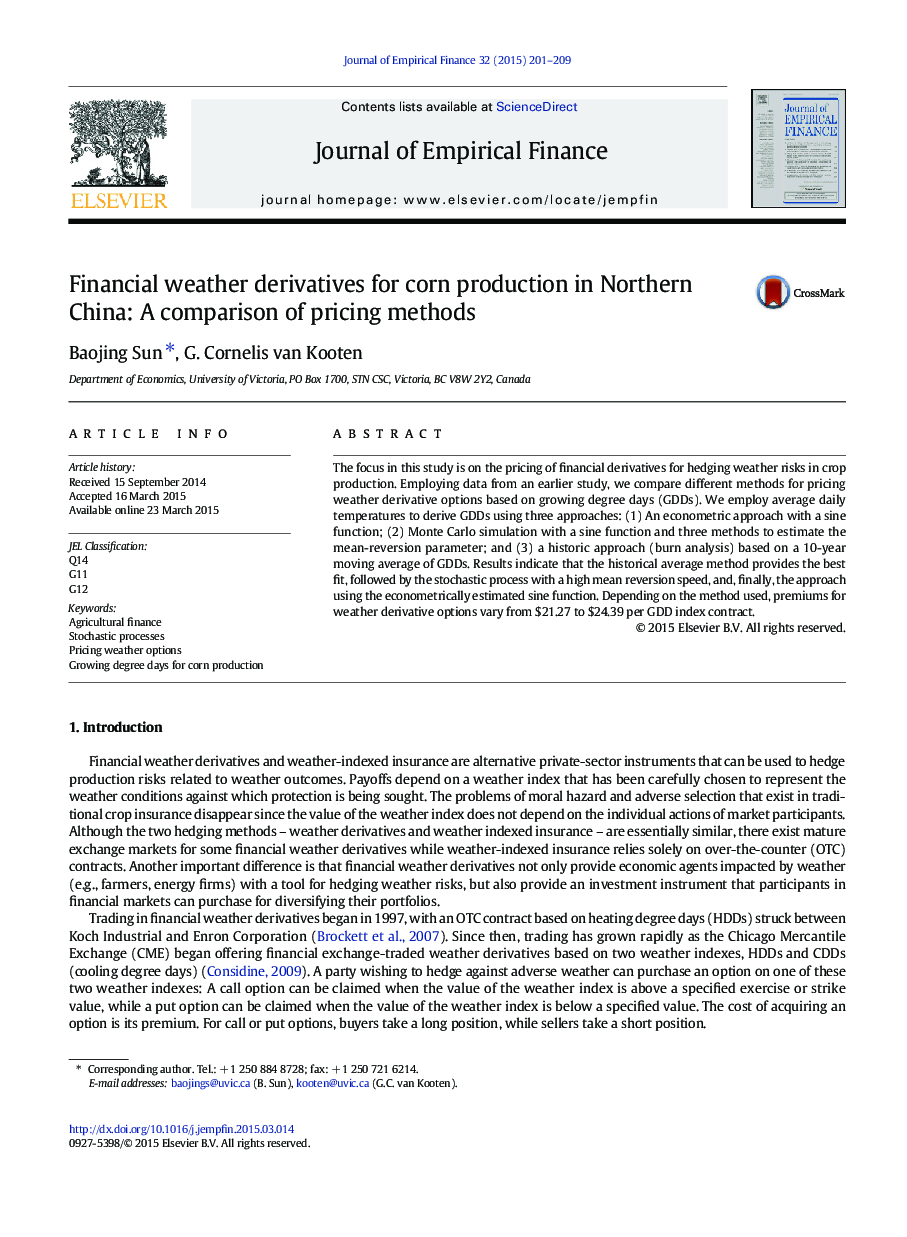| Article ID | Journal | Published Year | Pages | File Type |
|---|---|---|---|---|
| 958361 | Journal of Empirical Finance | 2015 | 9 Pages |
•The focus is on the pricing of weather derivatives for crop production.•Different methods for pricing growing-degree-day weather options are compared.•Results indicate that the historical average (burn analysis) method is preferred.•Burn analysis outperforms a stochastic process with high mean reversion speed.•Premiums for 0.2 standard deviations in growing degree days vary from $21 to $25.
The focus in this study is on the pricing of financial derivatives for hedging weather risks in crop production. Employing data from an earlier study, we compare different methods for pricing weather derivative options based on growing degree days (GDDs). We employ average daily temperatures to derive GDDs using three approaches: (1) An econometric approach with a sine function; (2) Monte Carlo simulation with a sine function and three methods to estimate the mean-reversion parameter; and (3) a historic approach (burn analysis) based on a 10-year moving average of GDDs. Results indicate that the historical average method provides the best fit, followed by the stochastic process with a high mean reversion speed, and, finally, the approach using the econometrically estimated sine function. Depending on the method used, premiums for weather derivative options vary from $21.27 to $24.39 per GDD index contract.
